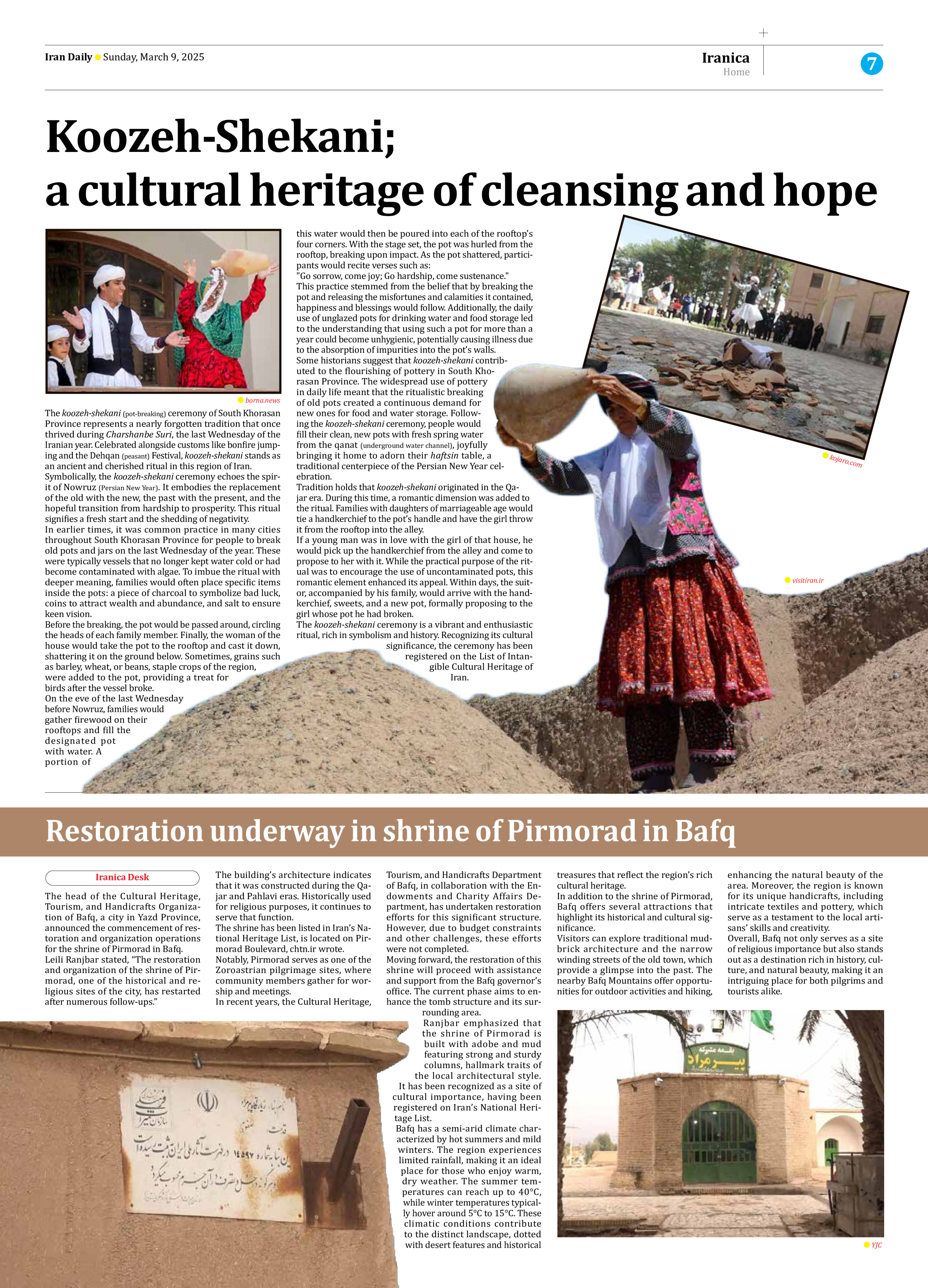
Koozeh-Shekani; a cultural heritage of cleansing and hope
The koozeh-shekani (pot-breaking) ceremony of South Khorasan Province represents a nearly forgotten tradition that once thrived during Charshanbe Suri, the last Wednesday of the Iranian year. Celebrated alongside customs like bonfire jumping and the Dehqan (peasant) Festival, koozeh-shekani stands as an ancient and cherished ritual in this region of Iran.
Symbolically, the koozeh-shekani ceremony echoes the spirit of Nowruz (Persian New Year). It embodies the replacement of the old with the new, the past with the present, and the hopeful transition from hardship to prosperity. This ritual signifies a fresh start and the shedding of negativity.
In earlier times, it was common practice in many cities throughout South Khorasan Province for people to break old pots and jars on the last Wednesday of the year. These were typically vessels that no longer kept water cold or had become contaminated with algae. To imbue the ritual with deeper meaning, families would often place specific items inside the pots: a piece of charcoal to symbolize bad luck, coins to attract wealth and abundance, and salt to ensure keen vision.
Before the breaking, the pot would be passed around, circling the heads of each family member. Finally, the woman of the house would take the pot to the rooftop and cast it down, shattering it on the ground below. Sometimes, grains such as barley, wheat, or beans, staple crops of the region, were added to the pot, providing a treat for birds after the vessel broke.
On the eve of the last Wednesday before Nowruz, families would gather firewood on their rooftops and fill the designated pot with water. A portion of this water would then be poured into each of the rooftop’s four corners. With the stage set, the pot was hurled from the rooftop, breaking upon impact. As the pot shattered, participants would recite verses such as:
"Go sorrow, come joy; Go hardship, come sustenance."
This practice stemmed from the belief that by breaking the pot and releasing the misfortunes and calamities it contained, happiness and blessings would follow. Additionally, the daily use of unglazed pots for drinking water and food storage led to the understanding that using such a pot for more than a year could become unhygienic, potentially causing illness due to the absorption of impurities into the pot’s walls.
Some historians suggest that koozeh-shekani contributed to the flourishing of pottery in South Khorasan Province. The widespread use of pottery in daily life meant that the ritualistic breaking of old pots created a continuous demand for new ones for food and water storage. Following the koozeh-shekani ceremony, people would fill their clean, new pots with fresh spring water from the qanat (underground water channel), joyfully bringing it home to adorn their haftsin table, a traditional centerpiece of the Persian New Year celebration.
Tradition holds that koozeh-shekani originated in the Qajar era. During this time, a romantic dimension was added to the ritual. Families with daughters of marriageable age would tie a handkerchief to the pot’s handle and have the girl throw it from the rooftop into the alley.
If a young man was in love with the girl of that house, he would pick up the handkerchief from the alley and come to propose to her with it. While the practical purpose of the ritual was to encourage the use of uncontaminated pots, this romantic element enhanced its appeal. Within days, the suitor, accompanied by his family, would arrive with the handkerchief, sweets, and a new pot, formally proposing to the girl whose pot he had broken.
The koozeh-shekani ceremony is a vibrant and enthusiastic ritual, rich in symbolism and history. Recognizing its cultural significance, the ceremony has been registered on the List of Intangible Cultural Heritage of Iran.







